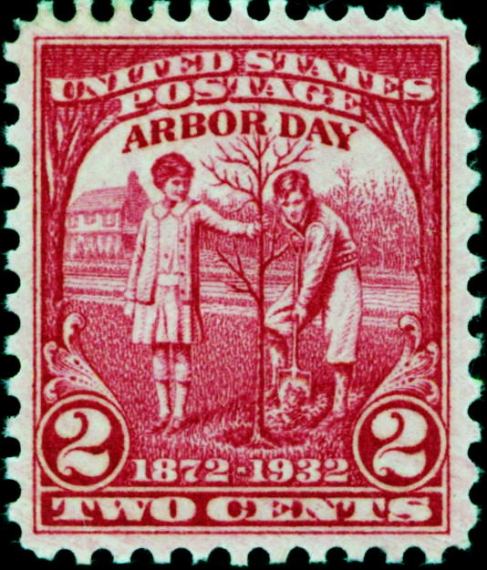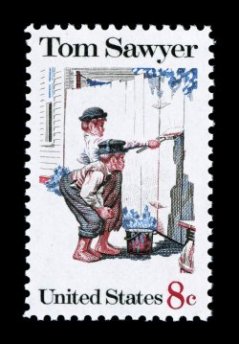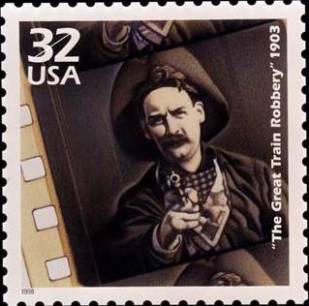Hot fudge.
Not exactly the food you might think about when it comes to America’s premier food week – that being Thanksgiving with all its trimmings – but it dribbled into my mind as I thought about the upcoming holiday feast.
My brain, like so many of ours, does that thing where you start thinking about one thing and that leads to another thread and another and multiple threads and so on. It’s just like those cartoons when Bugs Bunny pulls the loose thread on Elmer Fudd’s sweater and poor Elmer’s entire sweater unravels into a big heap on the floor.
My brain is often that sweater (oh, that explains a LOT, is what a lot of people who know me are now saying.)
So when I started thinking about the special Thanksgiving meals of my past I thought about several other special food moments in my life.
I am pretty far removed from anything one could call a “foodie.” I don’t know a spice from an herb, I have no clue what a reduction is, and I totally relate to the befuddled guy in the commercial whose wife packed him quinoa burgers for his tailgate party.
Thank God my girlfriend, Tori, cooks incredibly well. She uses a recipe on occasion, but mostly just creates great meals out of thin air. It’s all magic to me.
It’s not that I don’t have an appreciation of good food. I do. Anyone who knows me knows that I love to eat – just about anything (please NO meatloaf, lentils, Brussels sprouts, or sprouts of any kind).
But we also link food memories to places, people and events.
So when I think of the elementary school cafeteria, what comes to mind are fresh pears, always a treat in bagged lunches at the start of the school year, and those little vanilla ice cream cups you’d eat with the wooden spoon.
A staple at college (Oswego State) were subs – either from Oswego sub shop (meatball with mozzarella) or the oil-smothered subs from Jreck.
I couldn’t really stand onions when I was a kid. But when I smelled them frying with peppers, I knew Mom was making spaghetti sauce and we’d soon be gorging on a meal I would have gladly eaten five days a week.
The most interesting pizza I ever had was a very non-American-type pizza at a little restaurant in Marseille, which I was visiting with other teenagers during a spring trip. Whole tomatoes and other vegetables plopped right on the dough without the smooth red sauce we were all used to.
No, I don’t just eat burgers and pizza.
Some of the best meals I ever ate clearly had to do with great food combined with perfect ambience. A few worth remembering are Rezaz (Mediterranean cuisine) and Tupelo Honey Café (modern Southern fare) in Asheville, N.C.; the Bamboo Restaurant and Gallery (local fish done in tantalizing delicious sauce) in Hawi, the Big Island of Hawaii; and I swear that the best steak I ever had was not at a steakhouse, but at the Polynesian Resort at Walt Disney World in Orlando.
And there are memorable food disasters as well.
We grew up of modest means and I can remember boiled potatoes were a staple. Yuck, even with gobs of melting butter on top. My parents and I battled over them. I finally agreed to eat them, but my deal was I would eat the serving of potatoes first before I touched anything else. That way I gave myself a reward of the main meal.
There was the great lobster shortage of a few summers ago. Tori and I were in Rockport on Cape Ann, Mass. I could see the lobster boats pull up the traps from our hotel. I held off my annual lust for lobster until our last night there, my birthday. Perfect.
At 3 p.m. we drove past a great lobster place that had been recommended. We passed on it. Too early, I said. So dinner came and, armed with the names of a couple good lobster places we headed out. It was about 7:45 p.m.
First place we went – “best place in town for seafood,” a local said – looked great. Very New Englandish. It was about 7:30 p.m. The place looked full, but not overflowing. We were met near the door by a young, harried looking waiter.
“I’m sorry, but we’re just closing,” he said.
Huh? What? Excuse me? This is the height of the summer tourist season and you’re closing before 8 p.m.?
“Sorry.”
OK, no problem. Plan B. Get to the second place down the street. They’re open. AND they have a nice lobster dinner on the menu. Great. We’re seated. It’s about 8. Place our orders. A few minutes later, server returns to the table.
“I’m really sorry, but we’re all out of lobster.”
WHAT??? You’re joking!! Nope, no joke.
Now it was too late to try another place, so we ordered alternative dishes (my clams were awful) and I left the heart of Massachusetts lobstering territory without having the specialty. (I’ve suffered the same fate in other areas: TWO decent visits to NYC without a bagel, slice of pizza or street dog; trip to Hawaii without fresh pineapple, though, the papaya was to die for.)
As a p.s. to the lobster tale, Tori made it up to me big time when two nights after our return home, she surprised me with a big lobster dinner in our dining room, thanks to Wegmans.
As I parent, I somehow decided it was my duty to pass along food disasters to my son.
So one dark, 40-degree rainy Halloween night when he was about 8, his mother and I thought it was best for him to have something hot before he went out trick-or-treating. The choice: broccoli-cheese soup.
Poor kid was tricked big time. Though, in the parents’ defense, we didn’t know at the time that he was lactose intolerant. Trick-or-treating lasted about four houses. He didn’t get much candy, but on the bright side he also didn’t get chilled to the bone or eat the candy that may have caused cavities. I think he still hasn’t forgiven us. He does, however, remember broccoli-cheese soup, which he has never eaten again.
I like to be positive, though, so I prefer to remember meals like some of the Thanksgiving feasts I had as a kid. It was often my parents, older brother and my mother’s parents, who would come visit us from Delmar, N.Y., a suburb of Albany.
My grandparents were kosher and we were being raised Methodist, so that set up a bit of a conundrum for meals. But my Mom’s solution was we became kosher for the holiday. That drew a big hurrah from me because I got to drink ginger ale and 7Up with meals instead of milk.
We had no formal dining room and our kitchen barely fit four people (two of them being relatively small children) around a small kitchen table. Formal meals with guests wound up in the rectangular family room that my Dad had pretty much built by himself. There was a lot of decorative wood in there. The walls were knotty pine and a straight bay window overlooking the back yard took up the back window. The centerpiece was a fireplace Dad hand-built. It featured a lot of pink, gray, red and orange rough-cut marble.
My Mom and Grandma set a beautiful table, complete with linen tablecloth and napkins and candles. The silver was polished. The good china was used. We had fruit cups in little glass bowls to start. There was a relish plate. All the appropriate side dishes were there.
And the golden-brown four-legged turkey that Mom popped into the oven at 5 a.m. was roasted to perfection. My grandfather teased me terribly trying to get me figure where I turkey with four drumsticks could have come from. It was a memorable feast, indeed.
But I started this food essay by promising hot fudge.
I was about 7 and I had to be pulled out of school for an appointment of some sort. A doctor, no doubt, because I was sick a lot as a kid.
After the appointment, my mom realized there was only about an hour left in the school day, so on her own (I did NOT beg), she decided I didn’t have to go back to school. Instead, she took the opportunity to go to the old Northern Lights Mall in Mattydale, which in the mid-1960s (long before mega malls) was a major shopping center in this town. It was a long strip mall that kind of curved in the middle where a little train would give kids rides along the storefronts.
The main anchor was Chappell’s department store. Unlike all the other stores in the strip, Chappell’s was two stories, which made it Northern Lights’ grande dame. On the second floor was a restaurant.
Mom asked me if I’d like to go up there and have an afternoon snack. It was so unlike her to do this. We were from modest means and such a spur-of-the-moment splurge was very out of character. And I had never even seen the store’s restaurant before. It seemed very grownup to me.
We sat down at a little table for two (it may have been by a window) and looked at the menus. It was just the two of us, Dad was working, my brother was in school. I had no idea what to order. Mom asked if I’d like to get a hot fudge sundae. I had never had one before. I knew what it was, but was nervous about the concept of “hot” fudge in this decadent dessert.
I expressed my concern about how hot it may be, but mom assured me I would like it. OK, I was sold.
I can only imagine the looks on my face when this beautiful tower of decadence arrived in the clear glass sundae dish accompanied by an extra long spoon. A couple scoops of vanilla ice cream, drizzled with deep dark chocolate fudge, fluffy whipped cream on top, a sprinkling of nuts and, of course, a bright unnaturally red maraschino cherry. And the best part, of course, was I could see a whole bunch of that delicious dark fudge pooled at the bottom.
Go ahead, Mom urged.
Still with some trepidation (is this fudge going to burn me?) I did what I was told. One safe spoonful of ice cream to start (just to cool my mouth down) before going to the bottom for the good stuff. It really was pretty warm (no microwaves back then … I guess they heated it in a little pot on a stove), but it was, needless to say, heavenly.
After that first bite, I needed no more encouragement. It was (shockingly) more than 50 years ago and I’ll always remember it as the best sundae I’ll ever have.
With Thanksgiving here, it’s a time to say thanks and to enjoy special food.
I’ll never know why my mom took me for that sundae. There was no holiday, no special event. Maybe she just wanted to spoil me a little. Thanks, Mom.











